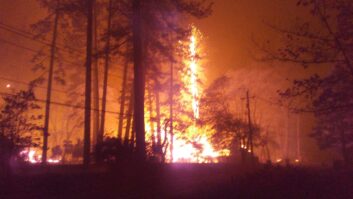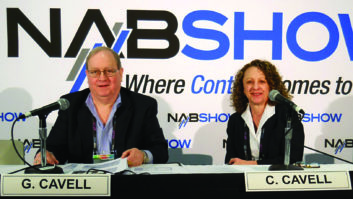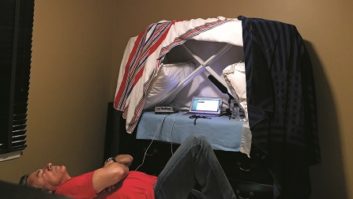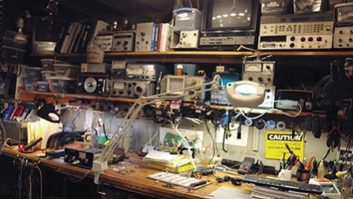Most of us drift through life a day at a time, our monument being the continuum, the accumulation, the totality of what we have accomplished. A few people reach pinnacles; David McCullough is one. He has written a handful of exceptional books: “Truman,” “The Great Bridge,” “The Johnstown Flood.” Each publish date marks a waypost of his life.
To me, his most exceptional work is “The Path Between the Seas,” the epic story of the building of the Panama Canal. Possibly I really like it because it’s the saga of an ENGINEERING project and the ENGINEERS who built it.
These folks struggled against a harsh physical environment and hostile conditions of public health and weather. The construction site was a building ground alternating quicksand-like mud with extremely hard rock. The area was infested with the pestilent, deadly disease of yellow fever and tropical, debilitating heat. Panama was, and probably still is, not your best location to do high-quality outside work.
The severe, decade- long challenge of directing this immense civil work burned out at least four chief engineers. McCullough does a great job of bringing these skilled and dedicated people to life, highlighting their talents, foibles, hopes, triumphs and defeats, their attempts to deal with the political ramifications of distant critics.
An interesting personal detail concerning one of the chief engineers has remained with me. This fellow was an ardent reader but felt that absorption fell off drastically after 20 minutes on any topic. So, at any time, he had at least four books on various subjects by his bed. He would read them for 20 minutes each before retiring.
On reflection, I had to agree with this concept of enhancing retention; ever since I have followed his advice. So on the floor next to my side of the bed at the moment are four books for nightly reading:
“The Shattered Silents,” a 1978 tech and business history of Hollywood’s conversion to sound, by Alexander Walker;
“Tuxedo Park” by Jennet Conant, published in 2003, a history of the private technology think tank near New York City that in World War II accelerated the Allies’ tech supremacy and contributed so much to our victory; this was a recommendation by fellow Radio World contributor Mark Persons;
“The Universal Story,” a 1987 synopsis by Clive Hirschhorn of the principal movies made by Universal from its founding, the best or most interesting out of a potential 2,600 films;
“Bridges,” the science and art of the world’s most inspiring structures, by David Blockley, published last year.
Now I have to admit that bridge design and construction fall into the realm of mechanical and civil engineering, not directly in the electrical/communication science universe that we inhabit; but the pull is strong for engineers. We step back a few paces, put on the CinemaScope view glasses and think about it: A bridge is about the biggest machine that any engineer will ever touch. As with railroading and the space shuttle — other BIG things — the attraction is undeniable.
“Bridges” is extremely interesting, and Blockley comes at the topic from several directions.
The first covers the tech aspects, essentially the forces, the materials, the techniques; he does a great job with this part, although more illustrations would enhance clarity of exposition. Have you explored or wondered about tower design and construction? The physics are about the same; a thorough read of this book will give you a better understanding of why towers stand up.
The next is the history and societal place of bridges, which he covers in an engaging and entertaining manner.
The last is the Zen of bridge design and construction. Blockley covers the interplay of professionals who make it happen, the everyday users of these bridges, the societal needs and impact and, ultimately, the bridge’s place in the universe of man.
Overdone? Not really, when you consider that most bridges link divergent places and people, for the first time or better than before, essentially changing the world at that nexus. Sort of what we try to do electronically in radio.
Bridges can be profound; and the concept of bridges has entered our lexicon such that we talk about the bridge over troubled water, building bridges between peoples, water under the bridge, etc.
In the Zen section, about the interplay of professionals, he waxes poetic about “joined-up systems,” those in which people start working together for a goal (build the best bridge where it is needed, for who really needs it) rather than for themselves (we’ve all worked at radio stations in this less-than-efficient category).
In the penultimate statement he tells us what it’s all about: “We first need to understand what we are aiming at. I define a joined-up system as one where we get the right information to the right people at the right time for the right purpose, in the right form and in the right way.”
The best ideas are the simplest. Again, if you open your mind, the most and best progress is made when everyone truly works together.
Brockley’s book is a hit with the intelligentsia and available at most public libraries. My copy was from the local Avon Library in my home town in Connecticut. I joke with the lady who checks out my selections that the library card is the most powerful charge card in my wallet … forget Visa, MasterCard, Discovery or Diners. None of those pieces of plastic gives you access to most of the knowledge accumulated by man since the start of recorded data … the raw and extreme power of knowledge.
Knowledge and your part of it will be the core of the next column as this one is too long already. See you next month.
The author wrote last month about the world of connectors, “The Entire Universe, Divided Into Two Parts.” Charles S. Fitch, P.E., W2IPI, is a registered professional consultant engineer, broadcast consultant, licensed master electrical contractor, former radio station owner and former radio/TV director of engineering. He writes the columns Certification Corner in Radio World Engineering Extra and Milestones in Radio World.












